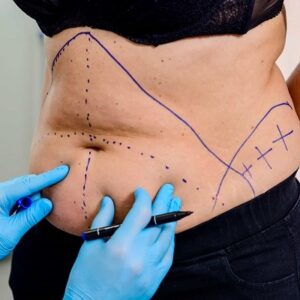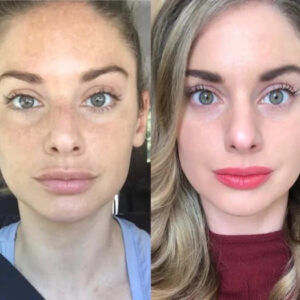Liposuction is a popular cosmetic procedure designed to remove stubborn fat deposits and improve body contours. Many patients considering Liposuction Surgery in Riyadh(عملية شفط الدهون في الرياض) wonder how long the results will last and whether the procedure provides a permanent solution. Understanding the factors that influence long-term outcomes helps patients set realistic expectations, maintain results, and make informed decisions about their body contouring journey.
Immediate and Short-Term Results:
The initial results of liposuction are visible shortly after the procedure, though swelling and bruising can temporarily mask full effects. Key points include:
-
Swelling and bruising are normal in the first two to four weeks
-
Initial contour improvements may be noticeable within a few weeks
-
Compression garments help reduce swelling and shape the treated areas
-
Short-term results provide motivation but are not yet indicative of final outcomes
Long-Term Fat Reduction:
One of the advantages of liposuction is the permanent removal of fat cells in treated areas. Patients should know:
-
Fat cells removed during the procedure do not grow back
-
Remaining fat cells can enlarge if weight is gained
-
Results are considered long-lasting when paired with a healthy lifestyle
-
Targeted fat reduction offers contouring that diet and exercise alone may not achieve
Factors Affecting Longevity:
Several variables influence how long liposuction results last. Important factors include:
-
Post-surgery weight management and exercise habits
-
Overall metabolism and genetics
-
Age and skin elasticity, which affect how skin adapts to new contours
-
Presence of medical conditions that may influence weight or fat distribution
Immediate Post-Operative Period:
The first 24 to 48 hours after liposuction are critical for managing discomfort and swelling. Key aspects include:
-
Mild to moderate pain and soreness at the treated areas
-
Swelling, bruising, and temporary numbness are common
-
Use of prescribed pain medications and cold compresses to manage discomfort
-
Wearing compression garments to reduce swelling and support healing
-
Resting and avoiding strenuous activity during this period
First Week After Surgery:
The first week focuses on reducing swelling and monitoring for complications. Patients should expect:
-
Continued swelling and bruising, which gradually start to improve
-
Light activity such as short walks to promote circulation
-
Limited range of motion or stiffness in the treated areas
-
Adherence to surgeon instructions regarding wound care and hygiene
-
Avoiding heavy lifting or vigorous exercise
Weeks Two to Four:
By the second to fourth week, many patients notice significant improvements in comfort and mobility. Recovery highlights include:
-
Swelling continues to decrease, revealing initial contour improvements
-
Bruising begins to fade
-
Patients can gradually resume more normal daily activities
-
Compression garments may still be required for optimal results
-
Mild tenderness may persist in treated areas
Weeks Four to Six:
During this stage, the body continues to heal and refine contours. Key points include:
-
Majority of swelling has subsided, and results become more apparent
-
Increased mobility and return to low-impact exercise with surgeon approval
-
Skin tightening and adaptation to new body contours
-
Minor residual bruising or firmness may still be present
-
Continued attention to hydration, nutrition, and rest for optimal healing
Long-Term Healing and Results:
Full recovery and final results may take several months, depending on the treated areas and individual healing rates. Important considerations include:
-
Final body contours become visible around two to six months post-surgery
-
Residual swelling may linger, especially in larger treatment areas
-
Gradual improvement in skin texture and elasticity
-
Long-term maintenance of results through a healthy lifestyle
-
Regular follow-ups with the surgeon to monitor healing progress
Managing Discomfort and Swelling:
Effective management of post-operative symptoms ensures a smoother recovery. Recommendations include:
-
Wearing compression garments as instructed to minimize swelling
-
Applying cold compresses during the first few days for comfort
-
Taking prescribed pain medications as needed
-
Elevating treated areas when possible to reduce fluid buildup
-
Avoiding excessive salt intake that can worsen swelling
Scar Care and Skin Healing:
While liposuction incisions are small, proper scar care enhances cosmetic outcomes. Key tips include:
-
Keeping incision sites clean and dry
-
Following surgeon instructions for topical treatments or ointments
-
Avoiding sun exposure on healing skin to prevent darkening
-
Gently massaging areas if recommended by your surgeon to improve skin texture
-
Monitoring for signs of infection or unusual changes in the incision
Weight Management After Surgery:
Maintaining a stable weight is critical for preserving liposuction results. Guidelines include:
-
Following a balanced diet with lean proteins, vegetables, and whole grains
-
Engaging in regular physical activity, including cardio and strength training
-
Avoiding significant weight fluctuations that can alter body contours
-
Monitoring body changes and adjusting lifestyle habits as needed
Skin Elasticity and Aging:
Skin quality affects how results appear over time. Considerations include:
-
Younger patients with good skin elasticity often see smoother results
-
Older patients or those with significant weight loss may experience mild skin sagging
-
Skin-tightening treatments or combination procedures may enhance long-term results
-
Maintaining hydration and skin care routines supports elasticity
Areas of the Body and Fat Distribution:
Different body areas may respond differently to liposuction, impacting longevity. Key points include:
-
Abdomen, thighs, arms, and flanks are common treatment areas
-
Stubborn fat regions may require lifestyle management to maintain results
-
Body shape and fat distribution patterns influence how results hold over time
-
Targeted areas generally show more permanent contour improvements compared to overall weight loss areas
Realistic Expectations:
Understanding what liposuction can and cannot do ensures satisfaction with long-term results. Patients should be aware that:
-
Liposuction is a body-contouring procedure, not a substitute for weight loss
-
Results may slightly change with natural aging and lifestyle factors
-
Final results become fully apparent after several months as swelling resolves
-
Realistic expectations improve long-term satisfaction and confidence
Complementary Procedures for Longevity:
In some cases, combining liposuction with other treatments enhances lasting results. Advantages include:
-
Skin-tightening procedures to address mild laxity
-
Fat transfer to enhance body contours in desired areas
-
Lifestyle-focused programs for weight maintenance and overall health
-
Personalized surgical plans that consider long-term aesthetic goals
Choosing a Qualified Surgeon in Riyadh:
Selecting an experienced surgeon plays a critical role in achieving long-lasting results. Patients considering Liposuction Surgery in Riyadh should evaluate:
-
Board certification and extensive experience in body contouring
-
Proven track record of natural-looking, durable results
-
Comprehensive consultation addressing individual body goals and realistic outcomes
-
Clear guidance on post-operative care and long-term maintenance
Final Thoughts:
Liposuction offers permanent fat removal in targeted areas, but long-term results depend on factors such as weight management, skin quality, and lifestyle habits. By maintaining a healthy diet, exercising regularly, and following post-operative care instructions, patients can enjoy the benefits of liposuction for many years. Those undergoing Liposuction Surgery in Riyadh who invest in proper preparation, surgeon selection, and ongoing self-care are most likely to achieve lasting, satisfying body contours and enhanced confidence.





